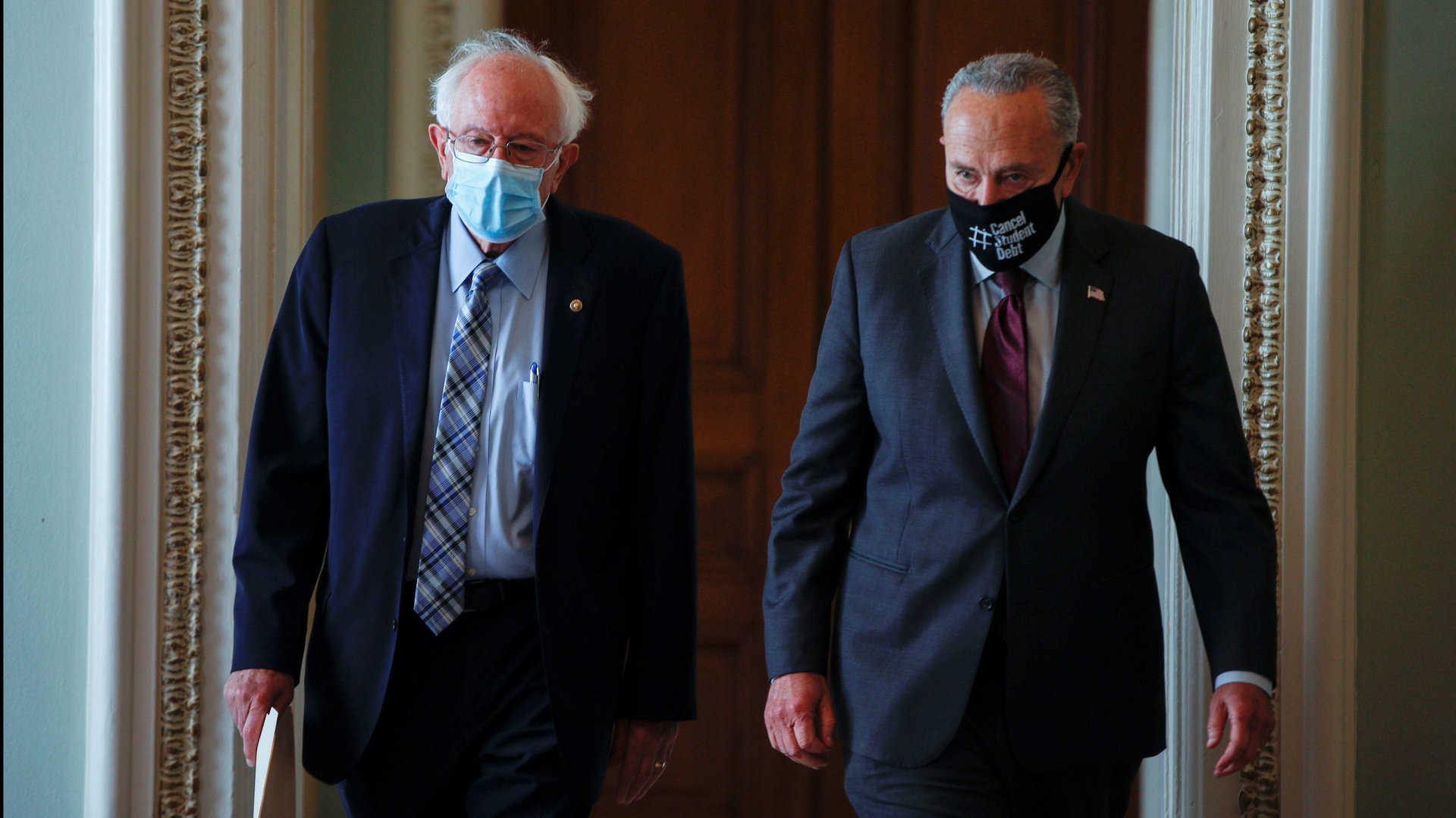What’s in the US’s $3.5 trillion bill for social and environmental reform?
The US Senate is getting ready to vote on a massive $3.5 trillion bill to finance an ambitious social and environmental reform plan over the next decade.


The US Senate is getting ready to vote on a massive $3.5 trillion bill to finance an ambitious social and environmental reform plan over the next decade.
The package, which was introduced by Democrats, covers everything from child and healthcare, to immigration and climate change, as part of Joe Biden’s so-called Build Back Better campaign proposal.
In presenting the resolution on Monday, Senate majority leader Chuck Schumer also shared reconciliation instructions, allocating the budget to the different commissions that will have the task of working out the details of specific programs. Afterward, the bill can be approved with a simple majority—so Democrats can move forward with it even without any Republican support.
According to Schumer, the budget will be entirely offset by healthcare savings, long-term growth, and new tax revenue. Families making under $400,000 per year will get a tax cut, and no new taxes will be imposed on small businesses and family farms.
The breadth of the plan is commensurate to its size, and though the details of specific interventions are yet to be decided by the appropriate committees, a few elements are especially noteworthy.
Healthcare 🤒
The resolution instructs to fill the Medicaid coverage gap, providing insurance for those who earn above the threshold to qualify for Medicare in their state, but below the minimum income that makes them eligible for the Affordable Care Act’s tax credit. This could cover up to 2 million adults across the country.
Medicare would be expanded to lower the qualifying age from 65 to 60, and to include dental, vision, and hearing benefits. The budget would be used to pay for medical leave, and provide long-term senior and disability care. The resolution includes investments to address the shortage of medical professionals and for specific programs for maternal and behavioral health, and reducing racial inequalities in healhtcare.
The plan also intends to strengthen pandemic preparedness and investments in primary care.
Child care 👶
The cost of child care is a huge burden on American families. On average, they spend 10% of their income on it—almost twice as much as what Department of Health and Human Services considers affordable—and the percentage is far higher for low-income families.
The plan seeks to address that by providing universal pre-K for 3- and 4-year-olds, which would amount to an investment of about $200 billion and save the average family $16,000 a year. Child care workers would earn at least $15 an hour. The package would also extend the child tax credit introduced in the latest stimulus bill, pay for family leave, and provide further investment in providing nutrition to children in need.
Immigration 🛂
A budget of $107 billion would be used to provide permanent resident status to qualifying immigrants. That includes providing a path to legalization for so-called Dreamers—or undocumented immigrants who entered the country as minors. The plan also calls for investments in more effective border patrol measures.
Climate ❄️
The energy budget of $198 billion would go primarily toward investment in, and support of, clean energy initiatives. The priorities include financing domestic manufacturing of clean energy, federal procurement of energy-efficient materials, climate research, and a clean electricity payment program to give power utilities incentives to increase their use of clean energy sources.
Provisions toward clean energy and environmental action are made in other sectors, too. They allocate funding for low-income solar and other climate-friendly technologies and environmental justice investments in clean water, as well as for investments to make federal buildings energy efficient and set a methane polluter fee to reduce carbon emissions. The resolution also gives directions to invest in coastal resiliency and healthy oceans investments, and to electrify their government vehicles.
Public housing 🏠
A budget of $332 billion is expected to go primarily toward affordable housing. The resolution calls for investments in various affordable housing funds, support in down-payments, and rental assistance. Other initiatives will include community investment and redevelopment, transit improvements, and the creation of sustainable housing.